5 Different Types of Wine and Their Tastes You Need to Know About
Perhaps one of the most popular and classiest alcoholic beverage in the world, wine is enjoyed, regularly or occasionally, by at least 60% of the Americans. Quite remarkably, about one-third (34%) of them consume it at least once per month, out of which 43% of wine drinkers are urban dwellers and youths.
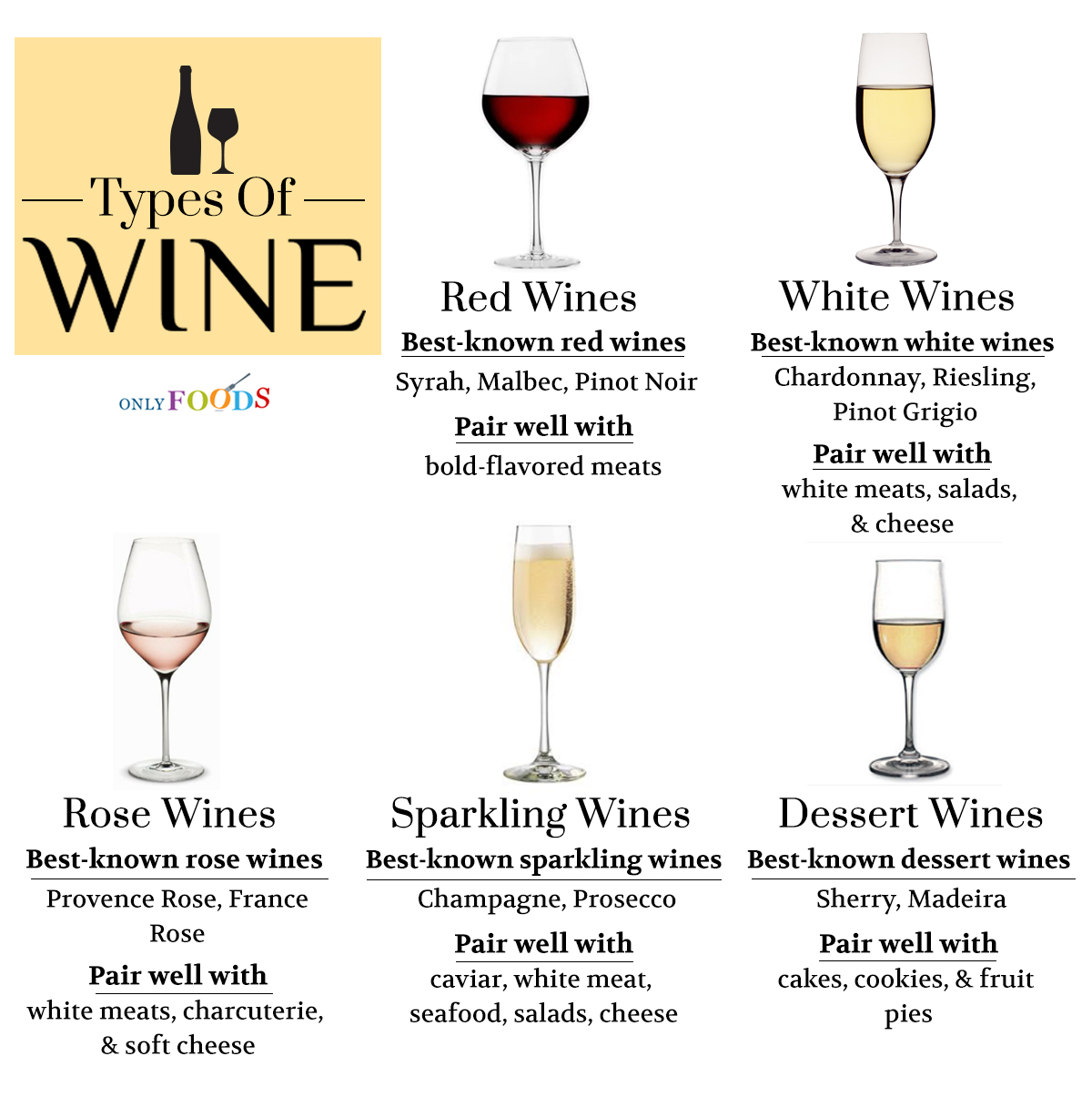
5 Different Types of Wine and Their Tastes You Need to Know About
Table Of Content
Traditionally, countries like Italy, France, Spain, and the US have been the major wine producers in the world but new countries such as Argentina, Russia, and New Zealand are now being valued for the quality of wines they produce.
There are 5 main types of wine, each of which can be further divided into different types. These varieties are categorized based on attributes like color, flavor, alcohol level, and production techniques. By knowing the different wine varieties and their characteristics, you will be able to order the right type that goes best with the moment or your mood.
How Wines are Classified and What Makes Them Different from Each Other
The presence of tannins (a naturally occurring bitter-tasting substance) in grape skins is what distinguishes the color and flavor of each wine. Those wine varieties produced from fermented juices with little or no grape skin end up being white or pink, having far lesser tannin content. Wines fermented along with grape skins for a longer period of time end up being red, having higher amount of tannins. In general, darker wines have higher tannin content with bolder taste.
How Wines are Described
The following descriptors are used for differentiating the various types of wines.
- Sweetness/dryness: Any wine variety that has 30 g of residual sugar per liter of the drink is technically ‘sweet’ while the one with less than 10 g of residual sugar per liter is considered ‘dry’. The term ‘dry’ is exactly the opposite of ‘sweet’. Anything in between is medium-dry or ‘off-dry’ with a hint of sweetness.
- Acidity: In context of wine tasting, acidity gives a drink its crispness or sourness. A moderately acidic wine is refreshing and crisp. Consequently, low acidity makes it taste ‘fat’ while high acidity makes it ‘sour’.
- Tannin: Wines that are highly tannic taste astringent and bitter. Those with low tannin content have a soft and smooth taste, making them more palatable.
- Aging: Oak barrel aging is a process by which red wines are usually aged for adding flavors and aromas, as well as making them smoother. Another aging process involves stainless steel barrels, which are used for maintaining the fresh aroma of white wines.
- Body: It signifies the consistency of a wine. Therefore, a full-bodied wine appears thick and will coat the sides of a glass as you drink it. A light-bodied wine is like water whereas a medium-bodied wine is thinner or lighter than the full-bodied drink.
- Flavors: Make sure you do not look for weird flavors that you have never tasted before, including graphite and barnyard. Try to choose more relatable flavors such as spicy, earthy, fruity, flowery, or smoky.
The Basic Wine Types and Their Most Popular Varieties
1. Red Wines
These are wine varieties made from dark-skinned grapes, which have colorless juice. Pressing these grapes at the winery causes the skins to mix with the must or juice, creating a reddish beverage. The color of these wine types can, however, range from dark violet through brick red to brown.
Red wines come in different flavors and aromas depending on the fruit varieties included and the aging method used. Some common fruit flavors include black fruit (such as blackcurrant, blackberry, black cherry, and black plum), red fruit (like raspberry, red plum, cranberry, red cherries, and strawberry), and blue fruit (like blueberry).
While texture plays an important role in helping you choose wines that go with food, red wines can have different degree of fullness of its body. Full-bodied reds like cabernet sauvignon have higher alcohol and tannin contents than medium-bodied and light-bodied red wines such as merlot and pinot noir. If you are an experienced drinker, you will love the style and taste of full-bodied types.
Popular Red Wines: Syrah, Malbec, Cabernet Sauvignon, Pinot Noir, Merlot, Rioja
Best paired with: Bold flavored meats such as ham, pork, turkey, and lamb
2. White Wines
These wine varieties are produced from green-skinned grapes that have colorless juice. Unlike red wines, grape skins are completely removed before the fermentation process of white wines. They also lack the tannins found in reds because of which aroma and acidity are the major attributes used for describing the whites.
White wines can vary from being dry to sweet in taste and style. French Muscadet, Austrian Gruner Veltliner, and Italian Pinot Grigio are some of the classic dry whites. In Germany, different types of sweet and dry whites are produced from Riesling grapes.
The whites are produced in both full-bodied (like Oaked Chardonnay) and light-bodied (such as Sauvignon Blanc) types. There is also an aromatic type (like Moscato) that can be distinguished by its floral and fruity notes.
Popular White Wines: Chardonnay, Riesling, Sauvignon Blanc, Pinot Grigio, Semillon, Gewurztraminer
Best paired with: Shrimps, crabs, lobsters, salads, fish, cheese, and poultry
3. Rose Wines
They are considered something in between the reds and whites that will help make your summer events and celebrations more special. These are produced by a short maceration technique in which the wine is allowed to mix with the red grapes’ skins for a few hours until the beverage turns pink. The rose wines can have a range of fruity flavors, including raspberry, strawberry, or melon along with notes of citrus.
Rose wines are also made by collecting some must during the production of reds and then putting it into another vat. It is known as the Saignee method, and this technique is typically used in the Sonoma and Napa regions of California.
Popular Rose Wines: Provence Rose, France Rose, Bandol Rose, Angeline Rose, Whispering Angel Rose
Best paired with: Chicken salad, soft cheese, salmon, charcuterie, duck, vegetable skewers on the barbecue
4. Sparkling Wines
These alcoholic beverages can be produced from any varieties of grapes, depending on the region where they are made. While they can be red, white, or rose in color, sparkling wines vary in their sugar content, ranging from dry (called brut) to sweet (called deux). Most sparkling wines, however, have some sugar in them for balancing the high acidity.
Sparkling wines are produced either by the traditional or the Charmat method, both of which involve a two-stage fermentation process. In the traditional method, the secondary fermentation occurs in the bottle for production of bubbles. The Charmat method involves a second fermentation inside a large enclosed tank.
Popular Sparkling Wines: Champagne, Prosecco, Moscato d’Asti, Cava, Penina
Best paired with: Shrimp, smoked salmon, shellfish, caviar, veggies, salami, stuffed mushrooms, triple cream cheese, buttered popcorn, egg dishes
5. Dessert Wines
Alcoholic beverages that are sweeter and have a lower percentage of alcohol content are known as dessert wines. The natural sweetness of these wines is retained by pausing the fermentation process before the entire sugar is consumed by the yeasts. They are golden brown or copper in color and characterized by a rich velvet-like texture. Dessert wines can be made from any grape variety, and they usually come in a wide range of fruity flavors. The dessert wines are also fortified with added spirits to increase the alcohol content.
Popular Dessert Wines: Tokaji, Noble Port, Madeira, Sherry, Late Harvest, Ice Wine
Best paired with: Cakes, cookies, fruit pies, and fudge
FAQs
Ans. Red wine varieties are all considered healthy. Pinot Noir, however, is the healthiest among all. Light white types like Pinot Grigio and Riesling have fewer calories than other whites and are considered healthy.
Ans. Traditionally, dry white vermouth is mixed with gin to make a Martini cocktail.
Ans. Some of the most expensive types of wine are Pinot Noir, Cabernet Sauvignon, Chardonnay, and Riesling.
Ans. Wine types that can be paired with spaghetti and meatballs include Sangiovese, Tuscan, Merlot, Barbera, Anglianico, and Chianti.
Ans. While vegetarian lasagna can be paired with lightly oaked Chardonnay, beef lasagna can be eaten with Gamay, Barbera, and light-bodied Sangiovese.
Ans. Mead is defined as honey wine. It is a combination of water and honey fermented by yeast. This beverage also comes flavored with spices, fruits, grains, and hops.
Ans. Some of the best types of wine for cooking include Pinot Noir, Merlot, lighter-style Cabernets, and Sangiovese.
Ans. California Zinfandel, California Petite Sirah, Portuguese Port, and Italian Amarone are some of the most potent alcoholic wines out there. Port wines can have an alcohol percentage as high as 20%-21%.
- by Joydeep Ghosh
- September 30th 2020



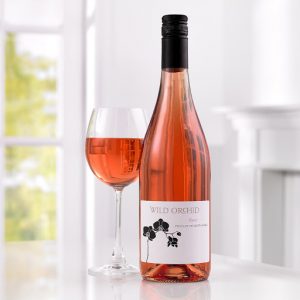


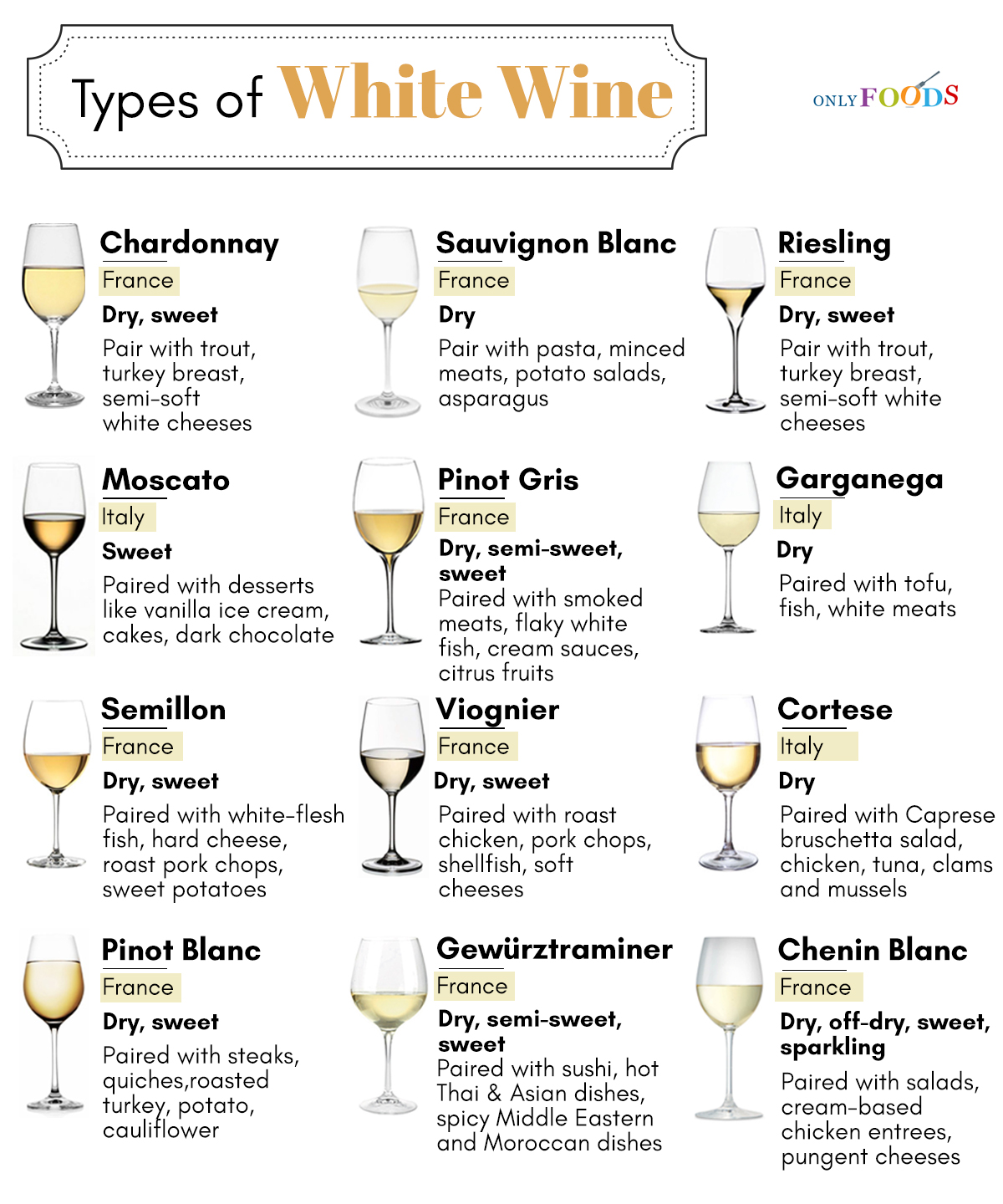
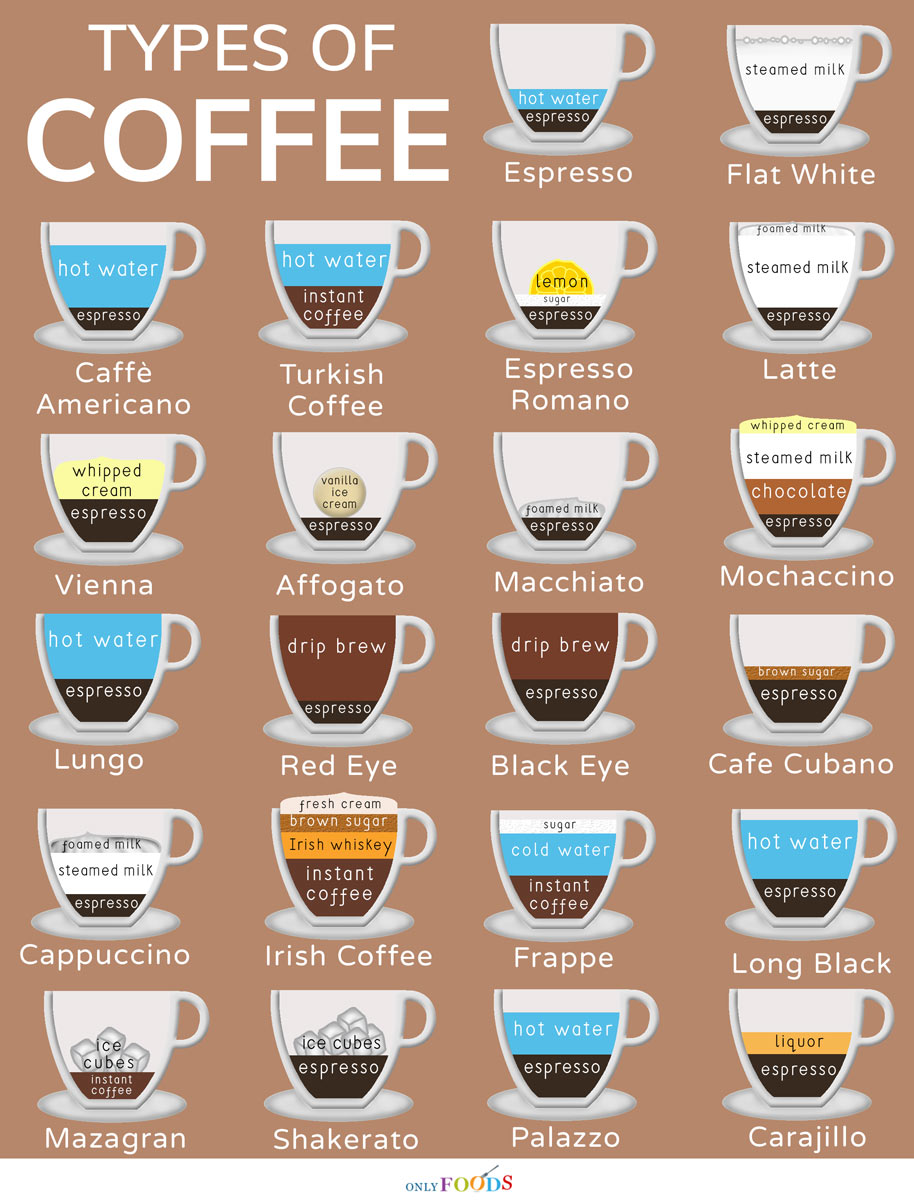
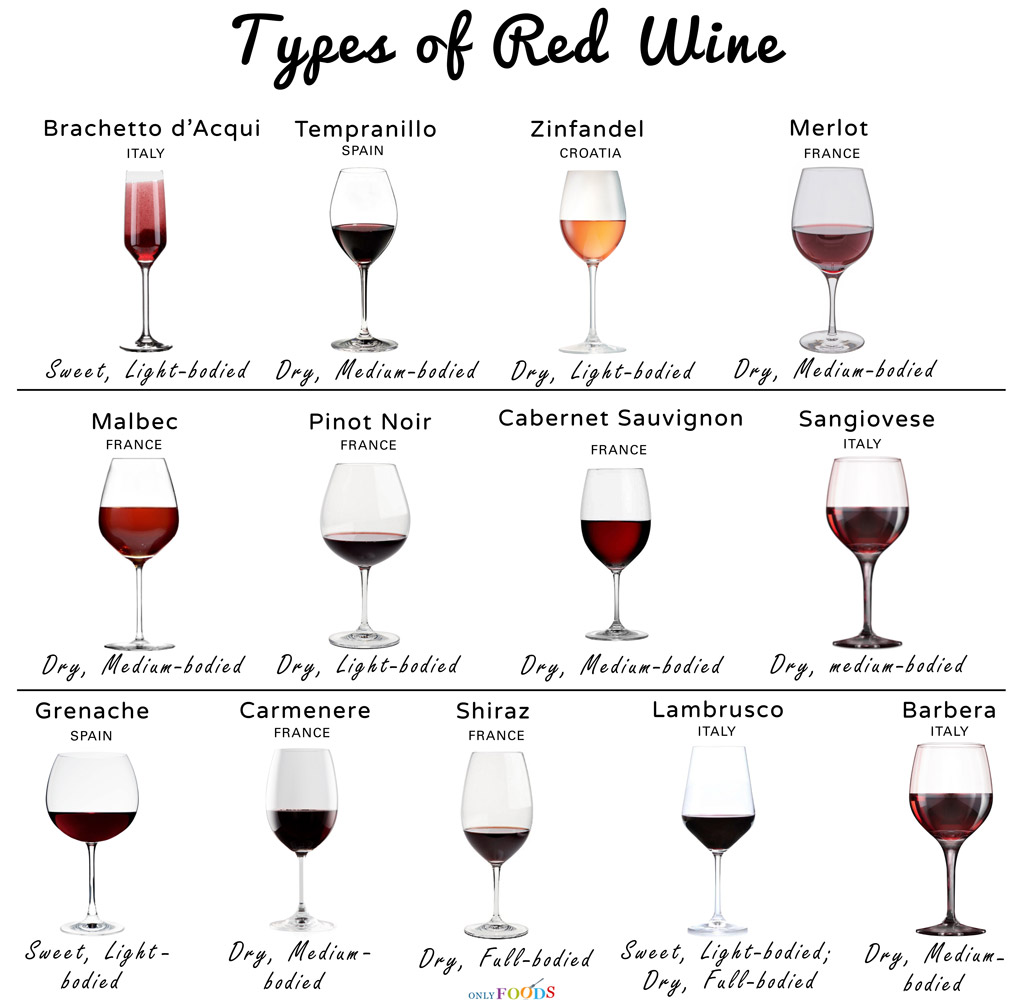
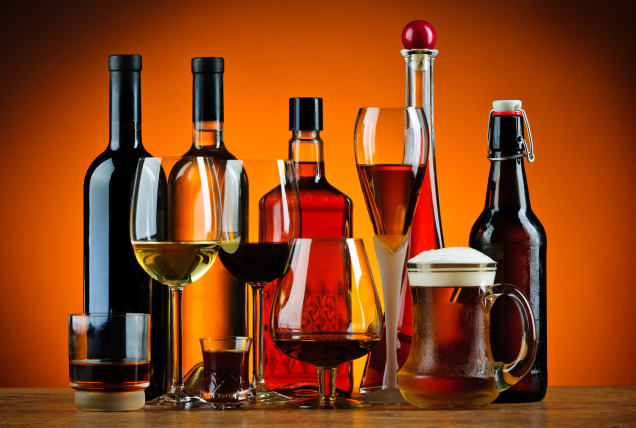















Leave a Reply